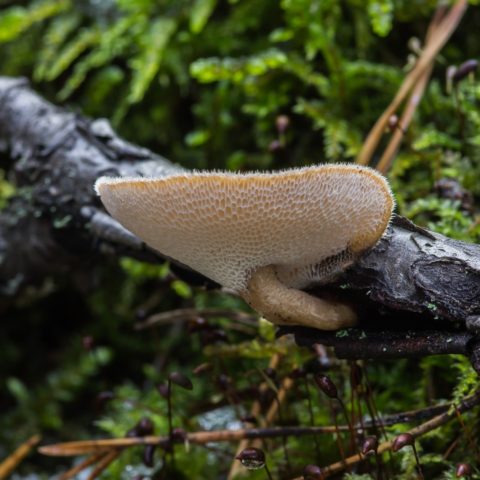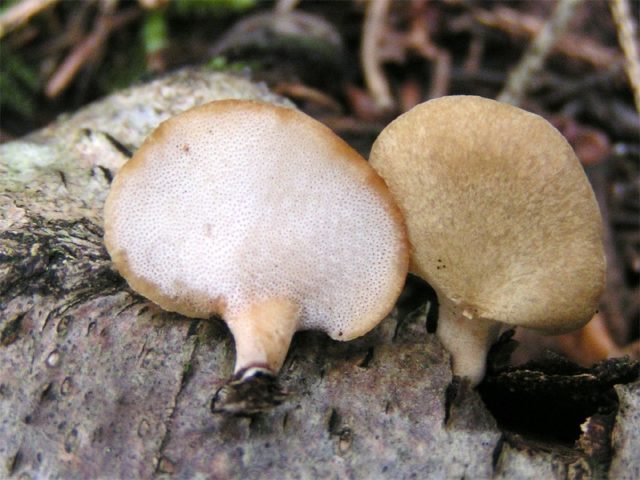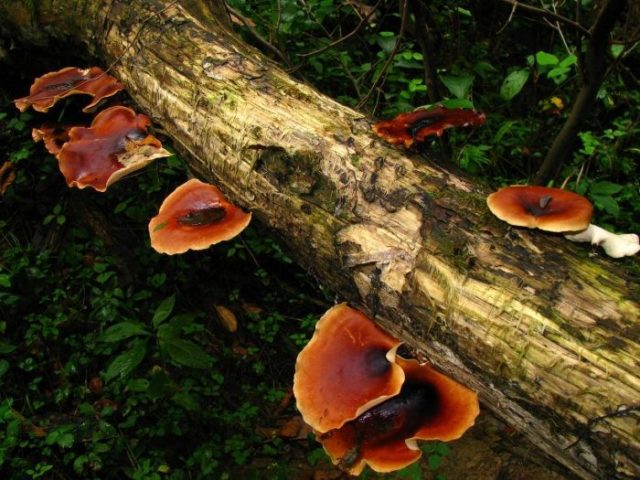Content
Winter polyporus or winter polyporus is an annual mushroom. From the name it is clear that it tolerates winter well. It is considered a very expensive mushroom. It is found quite often in deciduous and mixed forests, both alone and in families.

Under the cap of the tinder fungus there are clearly defined wide spores
Description of the winter tinder fungus
Winter polyporus refers to the hat-toed representatives. The cap is flat, up to 10 cm in diameter, covered with short hairs. Has a tubular texture of a pale cream color. The pores are large, visible to the naked eye. The edges of the cap are usually bent downward. In a mature species, a fossa (depression) appears in the center at the top. The color of various shades depending on age: brownish-yellow, brownish-gray, brown, and sometimes blackish. Spores ripen under the cap and become white.
The leg of the polyporus is dense to the touch, light brown, on average it grows up to 6 cm, sometimes up to 10 cm, up to 1 cm in diameter. The trunk has fine veins, velvety to the touch, with black spots on the surface.
This species has a white, rather firm flesh. It is dense in the leg, but elastic in the cap. At a mature representative, the flesh becomes yellowish and hard. The characteristic mushroom flavor is absent. There is no smell when dry.

Shades of color of this representative of the mushroom can vary depending on the climate and place of its growth.
Where and how it grows
This type of fungus grows in central Russia and up to the Far East.
Most often it grows alone, although there are both small and large groups. Winter tinder fungus grows in such places:
- deciduous wood (birch, linden, willow, mountain ash, alder);
- broken branches, weakened trunks;
- rotten wood;
- the edge of the road;
- bright areas.
Growing on trees, this forest dweller inflicts a white corrosive rot on them. Harmful to parks and wooden buildings.
Although this representative is called winter, it may well be attributed to the spring-summer representatives of the forest. The winter tinder fungus appears in early May. The second period of appearance is the end of autumn. Active growth occurs in July-October.
Is the mushroom edible or not
This mushroom representative is considered an inedible specimen. The pulp is firm. Does not have a characteristic mushroom odor. There is no taste. Eating is useless.
Some mushroom pickers believe that while the fruiting body of the fungus is quite young, the caps can be used for food boiled and dried. But do not risk it - in terms of nutritional value, it takes the last place.
Doubles and their differences
For inexperienced mushroom pickers, all tinder fungi look about the same. The mushroom has several counterparts. Among them, the most common:
- Polyporus changeable... It has a characteristic short and thin stem and a lighter cap. Inedible. Has a pleasant smell.
- Tinder chestnut (Polyporus badius). Differs in more glossy legs and larger sizes. It is an inedible mushroom.
Conclusion
Winter tinder fungus is an annual mushroom. Appears in deciduous, mixed forests, on roads. It grows both alone and in families. It is an inedible specimen.










